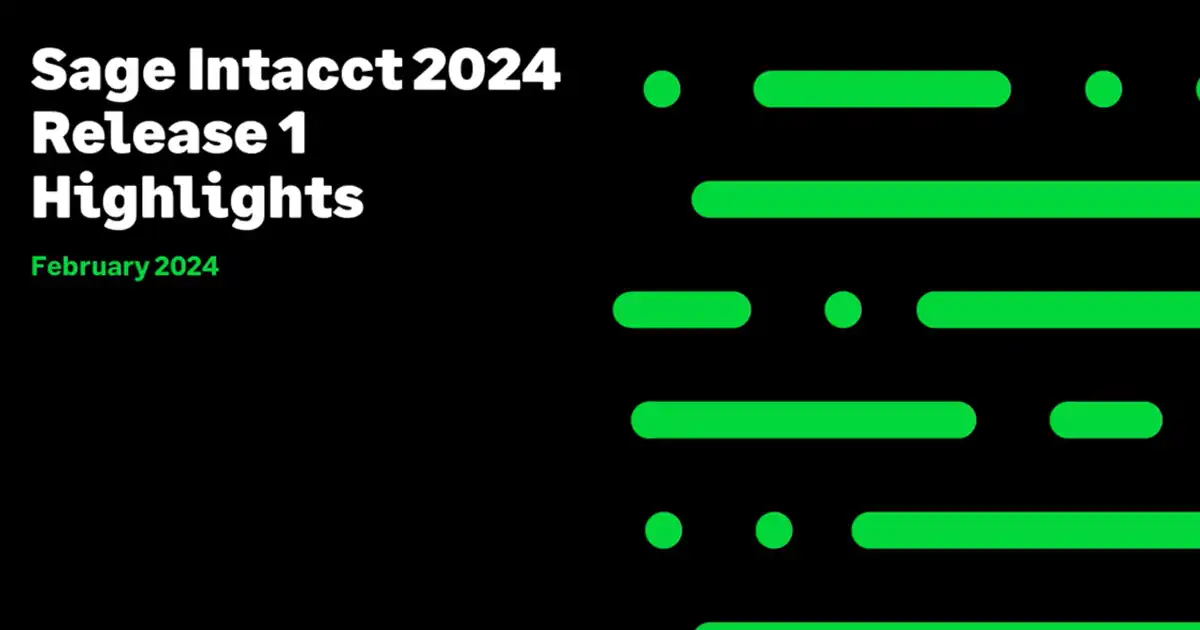Credit Card Feeds and Reconciliation
It’s automatic, fast, easy and accurate! What Sage Intacct did for bank feeds and bank reconciliation are now doing for credit cards. You can connect to Sage Cloud Services just as you do for bank feeds, and use the feed to flow transactions seamlessly into Intacct.
Credit card transactions are automatically matched to what’s already entered in the system resulting in easier reconciliation using our new reconciliation process, which provides the same intuitive filtering, sorting, and pagination that you’re used to with bank reconciliation.
Dynamic Allocations Support for Cross-entity, Multi-currency
In this additional subscription module, streamline gathering balances and applying allocation formulas into a one-time setup to automate generation of entries. You get ease of creation and ensure consistency in applying your allocation methodology.
Enhanced Journal Entry Automation
Streamlined recurring journal entry: You asked, and now you can generate a recurring entry from any direct posted journal entry. And, when you do, the basic information gets prepopulated from the selected journal entry into the recurring journal entry. As a bonus, Sage Intacct added a new cleaner look that makes it easier to quickly hone in on target information.
Revaluation automation: Automatically generate your unrealized gain or loss journal entry when you run GL, AR, and AP Revaluation reports. Simply select your journal and unrealized gain and loss account in GL configuration, then run your revaluation reports. You can run them live or offline, with an option to automatically create the unrealized gain or loss journal entry. The journal entry is created in draft state so that you can review it before posting. Save time and eliminate error-prone manual steps to extract information from revaluation reports and create the gain or loss journal entries.
Inventory Advanced Bin Tracking
Locating items in your warehouses is now faster and more accurate than ever. Instead of identifying items by aisles, rows, bins, now, bins by themselves pinpoint the specific location of items. Your users know exactly where inventory is for putting away and picking—saving time and reducing errors.
Contract Lifecycle Management Flexibility
Clear an unwanted Multiple Element Arrangement (MEA) without all the hassle: If you need to change your latest straightline or daily rate MEA allocation, you can now clear it without having to clear any other MEAs associated with the contract even if those MEAs are in closed periods. (FYI: Look for this feature to be expanded to additional revenue recognition methods in future releases.)
Additional automation: Added enhancements that include drill-down on the contract line number in a contract line grid; honed permissions for editing contract schedules; and added support for automatic application of inline credits.
Salesforce Integration for Non-profits (Early Adopter)
Sage Intacct continued to provide additional enhancements based on early adopter feedback to our Salesforce Integration for Non-Profits. The integration enables nonprofits the flexibility to integrate at the detail level as well as the aggregate level. You get improved collaboration, streamlined reconciliation, and real-time visibility across systems.
Improved User Efficiency
Navigation in your multi-entity company: Sage Intacct is eliminating an occasional, but somewhat vexing frustration. If you inadvertently close your top level tab, you no longer need to sign in again. You can now select your top level from the entity picker in any entity tab in your browser.
Enhanced Interactive Custom Report Writer
Combine reporting areas on the fly to report across workflows and business processes. You can use Union, Union all, Intersect or Minus on the reporting areas to get maximum insights right in Intacct.
Use the power of account groups to provide a fast path to consistently include the same account groups in creating your custom reports as you do in creating your financial reports. You can now select account groups wherever you can select accounts, making it easier to do roll ups and simplifying your ability to tie out reports regardless of where they are built.
Optimized Platform
Custom applications: You can now include CSPs and onload scripts when you publish and install your applications. In addition, you can view one centralized list to get easy visibility into installed components that are associated with your custom applications, including their objects and applications.
Triggers: Speed up the process of creating, viewing, and testing your triggers. You can now view triggers in one central place, preview and test a new trigger to ensure it works correctly, and even create a template on the fly as you create a trigger.
More APIs and SDKs: Sage Intacct is introducing a new Lookup API to retrieve the list of queryable fields and relationships for a given object as well as adding support for the Query API to our SDKs. Get more details on our developer website.
Watch the release highlights video. You’ll find release notes for all updates (both large and small), as well as selected videos from Sage Intacct product managers here.


